Myths, pilgrimage routes, and soccer
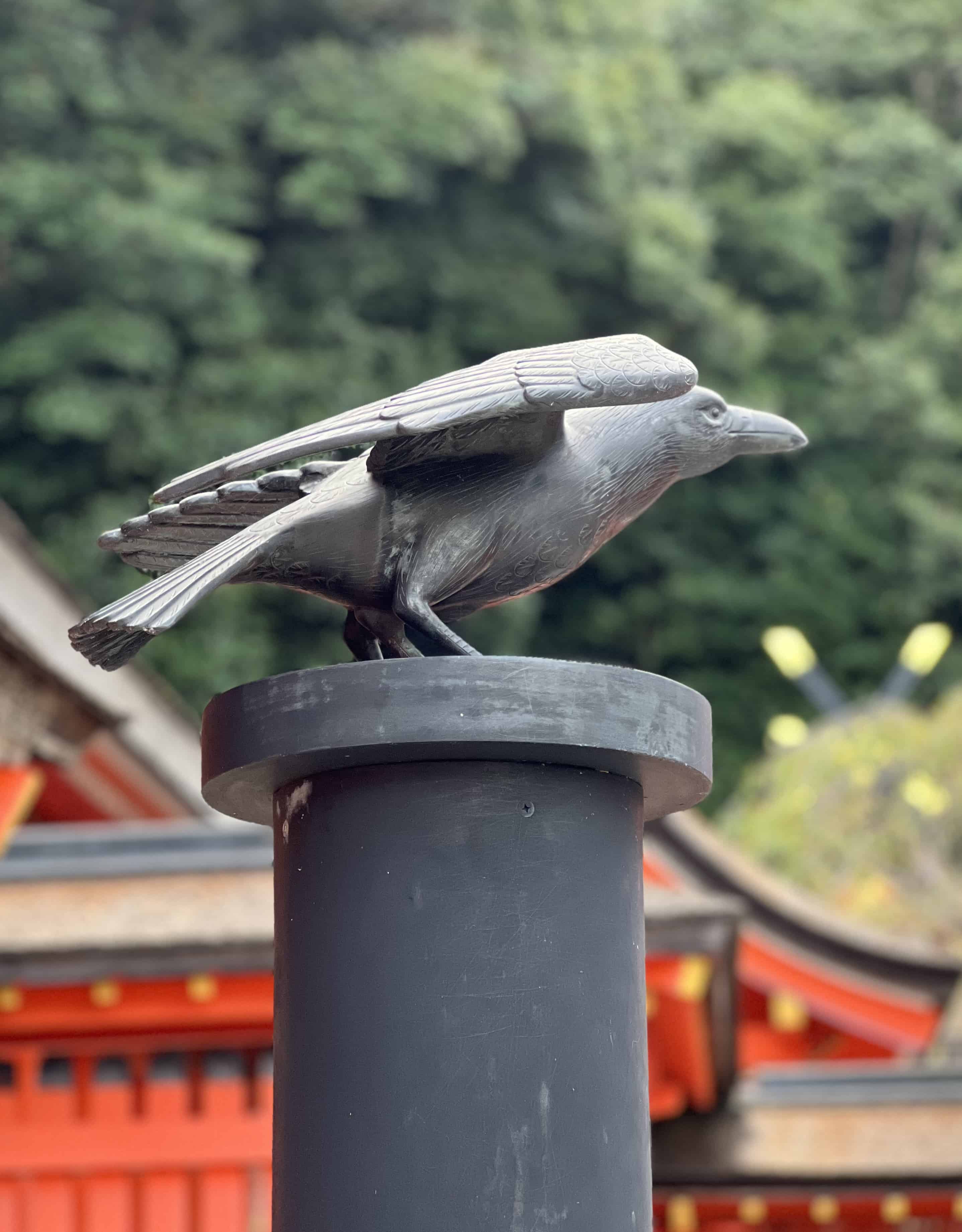
Those who have had the pleasure of hiking along the ancient pilgrimage paths of the Kumano Kodo on the Kii Peninsula of Wakayama Prefecture, Japan, have probably seen an image of the three-legged crow, Yatagarasu. These sacred crows are said to be messengers of the gods, and due to their intelligence and keen eyesight, they are also revered as guides.
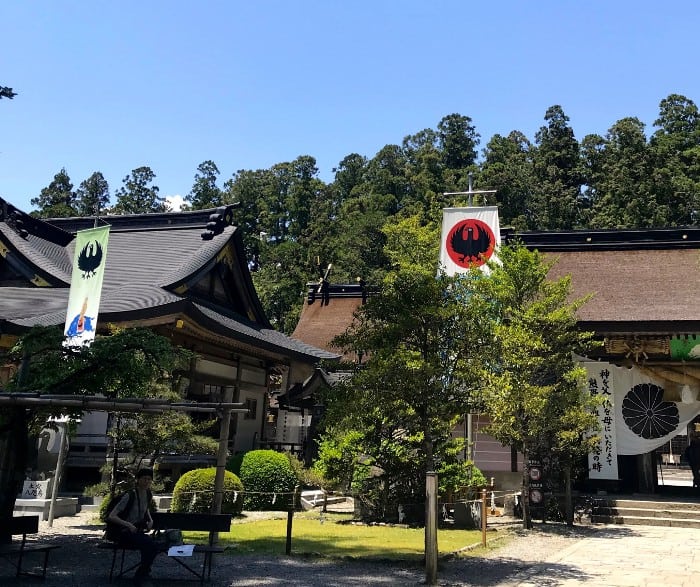
The Yatagarasu has a long history.
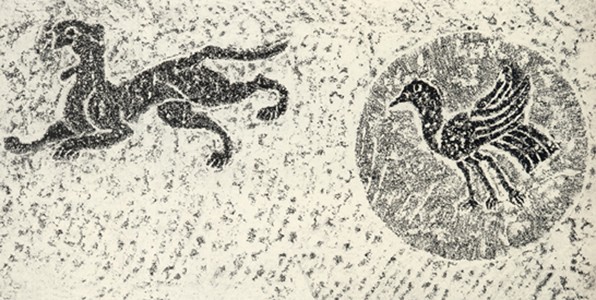
Ancient Chinese myths tell of a scarlet, three-legged bird that lived in the sun. Carvings of these birds have been found on tombs in China from the 3rd century, BC. In Japan, images of Yatagarasu were carved on the walls of the ancient Kitora Tomb in Nara.
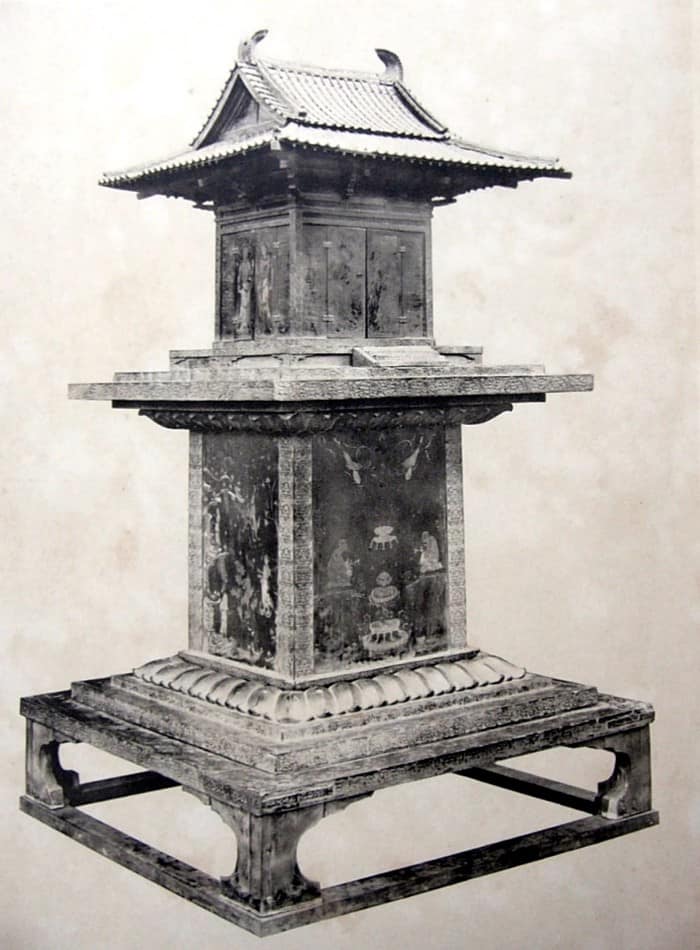
The three-legged crow even appears on the 7th century Tamamushi no Zushi, a small cabinet for holding Buddhist texts and objects that was decorated with over 2,500 jewel beetle wings, stored at Hōryuji Temple in Nara, Japan.
Guide to Emperor Jimmu
According to the Kojiki and the Nihon Shoki, ancient books that tell of Japan’s mythical origins, the Sun Goddess Amaterasu’s grandson descended to the earth on Mount Takachiho in southern Kyushu. One of his descendants became the first emperor of Japan, Emperor Jimmu.

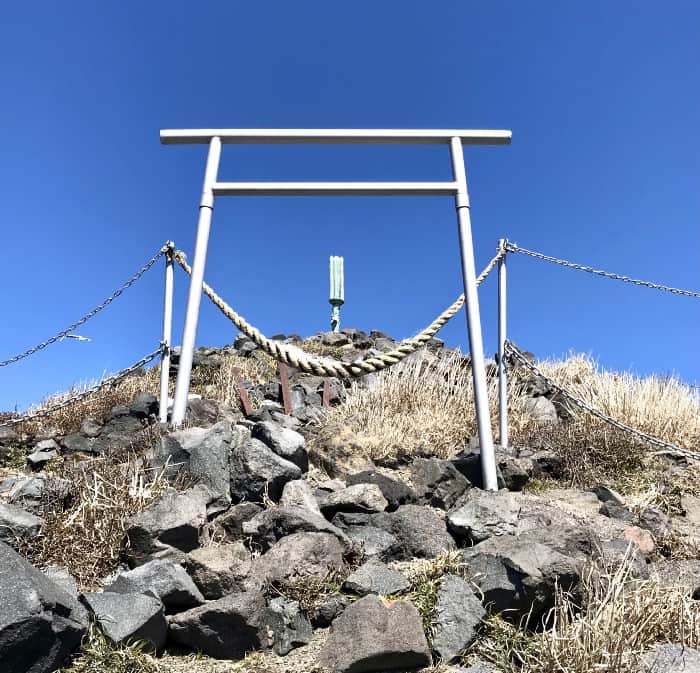
According to legend, in 660 BC Jimmu sailed north from Kyushu hoping to conquer the Nara region of Japan, then known as Yamato. He reached the western shore near present-day Osaka, headed inland — and was soundly defeated.
After some thought, he realized that his defeat must have been the result of traveling against the movement of the Sun Goddess Amaterasu. For his next incursion, he sailed down the coast to Kumano and made his next approach from the southeast, crossing the rugged mountains of the Kii Peninsula to reach Yamato.

The Kii mountains are steep, wet, and heavily forested. Jimmu and his army lost their way amid the towering trees.
Salvation came when Amaterasu, the Sun Goddess, sent a heavenly messenger in the form of a yatagarasu, a three-legged crow. This divine creature guided them safely through the treacherous terrain. Jimmu reached Yamato, succeeded in uniting Japan, set up the Yamato court — and became the forefather of all the Japanese emperors.
The Japanese nation’s roots can be traced to the bewildering mountains of Kumano.
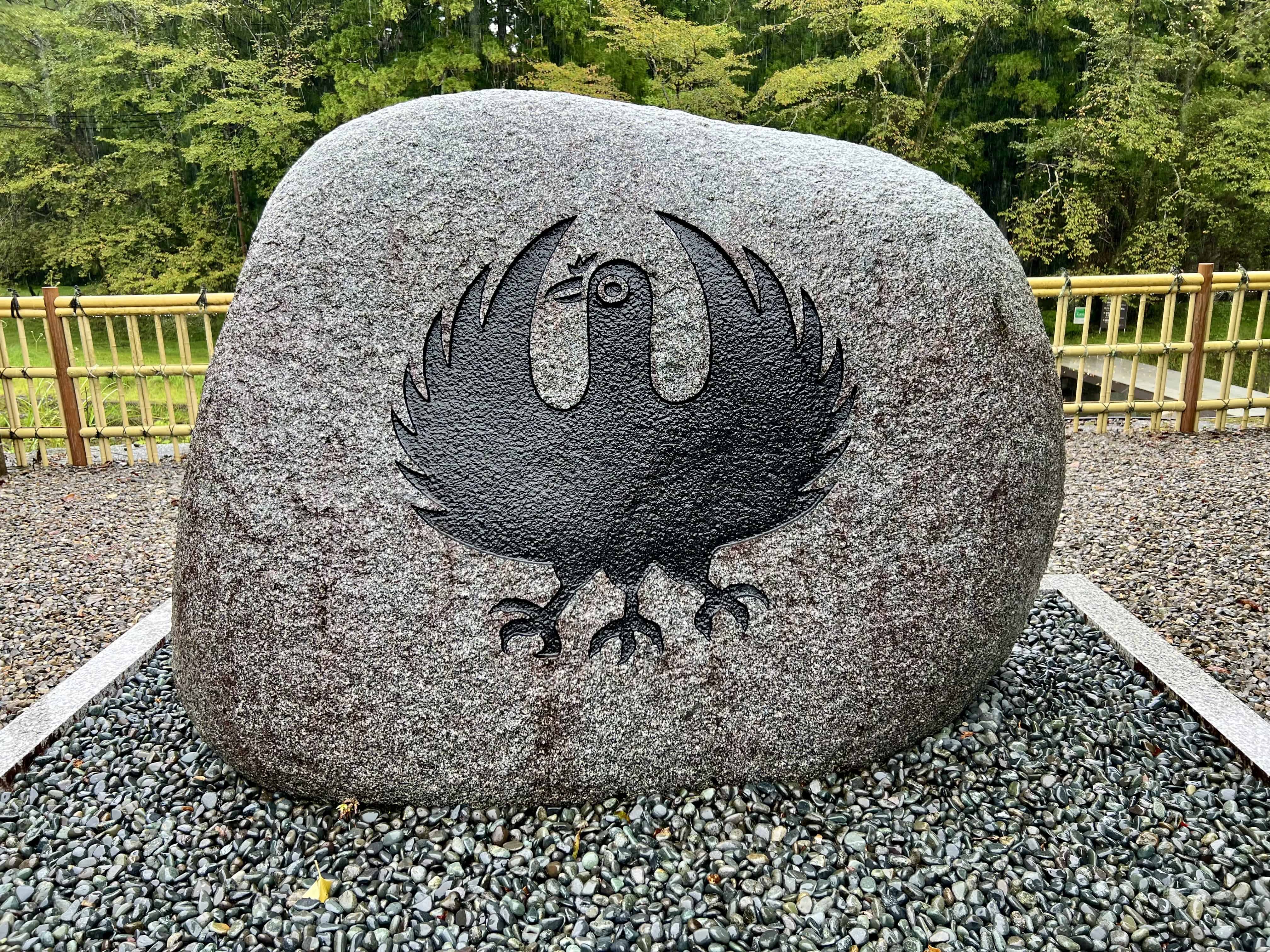
Why 3 legs?
The three legs have been said to represent:
天 The gods
地 Nature
人 Humanity
all of which were born from the sun and thus all are brothers.
Or,
知 Wisdom
仁 Benevolence
勇 Valor
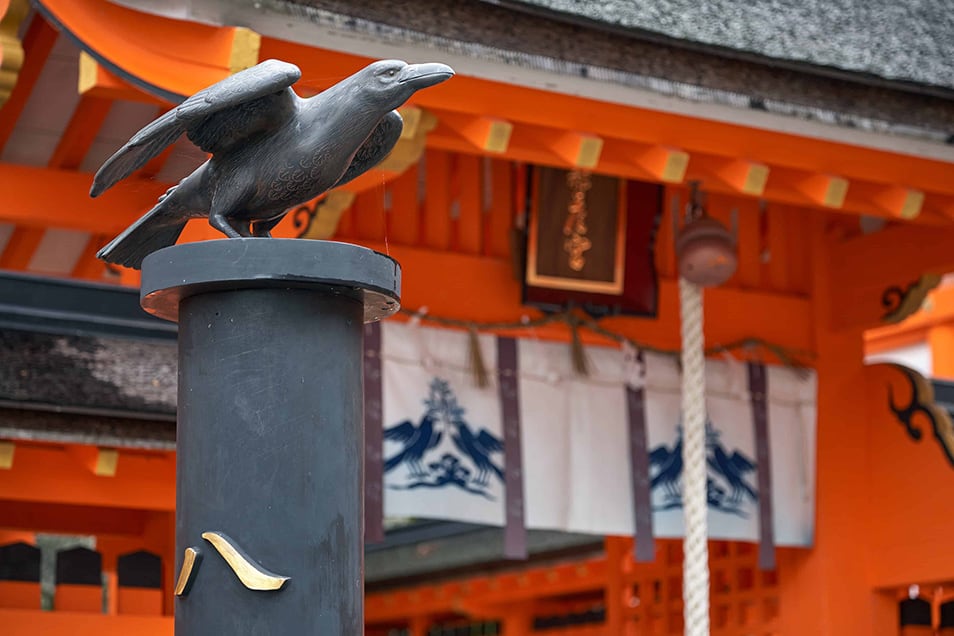
What does the three-legged crow have to do with soccer?
The founding father of soccer in Japan, Nakamura Kakunosuke (1878–1906), was from Nachi-Katsuura, a town on the western coast of the Kii Peninsula. In 1903, after translating the English soccer primer, Association Football, he established the first soccer team in Japan.
Perhaps in the hopes that the Yatagarasu of Kakunosuke’s hometown area would guide their teams to victory, the Yatagarasu was adopted as the emblem of the Japan Football Association.

For the story of the most popular guardian along the old roads of Japan, read about Jizō here.
All photos ©Diane Neill Tincher, unless otherwise noted.
If you have questions about Japan or suggestions for articles, please add them in the comments. For more photos and information on Japan, follow me on instagram at: https://www.instagram.com/more_than_tokyo/




